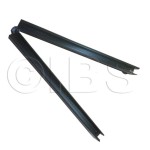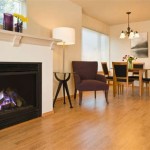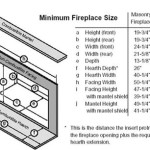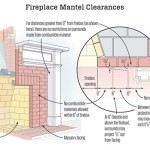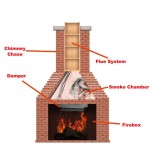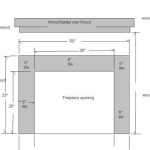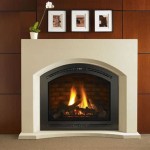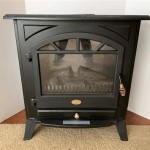```html
Glass Front Fireplace Safety: A Comprehensive Guide
Glass front fireplaces offer a modern and aesthetically pleasing alternative to traditional open fireplaces. While they provide radiant heat and a captivating visual display, understanding and adhering to safety guidelines is paramount to ensure safe and efficient operation. This article delves into the crucial aspects of glass front fireplace safety, covering potential hazards, preventative measures, and essential maintenance practices.
Understanding the Risks Associated with Glass Front Fireplaces
Despite their advantages, glass front fireplaces present several potential safety concerns. One primary risk is the extremely high surface temperature of the glass itself. During operation, the glass panel can reach temperatures exceeding 400 degrees Fahrenheit (204 degrees Celsius). Direct contact with the hot glass can cause severe burns within seconds, especially for children, pets, and vulnerable adults. The risk of accidental contact is exacerbated by the often-clear or tinted appearance of the glass, which may not immediately convey the danger of its heat.
Another significant risk is the potential for carbon monoxide (CO) poisoning. Carbon monoxide is a colorless, odorless, and tasteless gas produced by incomplete combustion of fuels like natural gas, propane, or wood. If the fireplace is not properly vented or if the venting system is blocked or malfunctioning, carbon monoxide can accumulate inside the home, leading to serious health problems or even death. Glass front fireplaces, while often more efficient than open fireplaces, still require proper ventilation to prevent CO build-up.
Furthermore, improper installation or maintenance of the fireplace can lead to gas leaks (for gas fireplaces) or chimney fires (for wood-burning fireplaces). Gas leaks can create an explosion hazard, while chimney fires can rapidly spread to the structure of the house. Regular inspections and maintenance are essential to identify and address any potential issues before they escalate into dangerous situations. The type of glass used in the fireplace is also a factor. Tempered glass is most commonly used, however, in some older models, standard glass may be present and poses a significant hazard if cracked or broken.
Implementing Preventative Safety Measures
To mitigate the risks associated with glass front fireplaces, various preventative measures should be implemented. The most crucial step is installing a safety screen or barrier in front of the glass. These screens, typically made of metal mesh or bars, create a physical barrier that prevents accidental contact with the hot glass. The screen should be sturdy and securely attached to the fireplace surround or wall to prevent it from being easily dislodged by children or pets. The spacing of the screen should be narrow enough to prevent small hands or paws from reaching through to the glass.
Installing carbon monoxide detectors is equally important. These detectors should be placed on every level of the home, especially near sleeping areas. The detectors should be regularly tested and the batteries should be replaced at least twice a year. If the carbon monoxide detector alarms, it is crucial to evacuate the premises immediately and contact emergency services or the local fire department for assistance. Do not re-enter the home until it has been thoroughly inspected and cleared by qualified professionals.
Education is another vital component of fireplace safety. All members of the household, particularly children, should be educated about the dangers of touching the hot glass. They should be taught to stay a safe distance from the fireplace during operation and for a period of time after it has been turned off. Adults should also be aware of the warning signs of carbon monoxide poisoning, such as headaches, dizziness, nausea, and confusion. Having a clear understanding of these symptoms can facilitate prompt action and prevent serious health consequences.
Regularly inspecting the fireplace and its venting system is essential. For gas fireplaces, check the gas lines and connections for any signs of leaks, such as a sulfurous odor. The burner should be inspected for proper flame patterns, which should be blue and even. If any abnormalities are detected, contact a qualified gas appliance technician for repair. For wood-burning fireplaces, the chimney should be inspected annually by a certified chimney sweep to remove any creosote buildup, which can lead to chimney fires. The damper should also be checked to ensure it is functioning properly and allowing for adequate ventilation.
Maintaining a safe distance between flammable materials and the fireplace is crucial. Curtains, furniture, rugs, and paper products should be kept at least three feet away from the fireplace opening. Do not store flammable liquids, such as gasoline or kerosene, near the fireplace. The area around the fireplace should be kept clear of clutter to prevent accidental fires. Even after the fireplace is switched off, radiant heat can linger and ignite nearby combustibles. Allow ample time for cooling.
Essential Maintenance Practices for Glass Front Fireplaces
Proper maintenance is critical for ensuring the safe and efficient operation of glass front fireplaces. One essential maintenance task is cleaning the glass panel regularly. Over time, soot and deposits can accumulate on the glass, obscuring the view of the flames and potentially reducing the fireplace's efficiency. Use a specialized glass cleaner specifically designed for fireplace glass to remove these deposits. Avoid using abrasive cleaners, as they can scratch or damage the glass. Follow the manufacturer's instructions for cleaning the glass, and always allow the glass to cool completely before cleaning it.
The burners of gas fireplaces should be cleaned periodically to remove any debris that may be obstructing the gas flow. Use a soft brush or vacuum cleaner to remove any dust, lint, or spider webs from the burner area. Ensure that the burner ports are clear and unobstructed. If the burner is difficult to clean, consult a qualified gas appliance technician for assistance. Regular cleaning of the burners will help to ensure that the fireplace operates efficiently and safely.
The venting system of the fireplace should be inspected and cleaned regularly. For gas fireplaces, the vent pipes should be checked for any signs of corrosion, damage, or blockage. For wood-burning fireplaces, the chimney should be inspected and cleaned annually by a certified chimney sweep to remove any creosote buildup. Creosote is a highly flammable substance that can accumulate in the chimney over time and cause chimney fires. Regular chimney cleaning is essential for preventing these fires and ensuring the safe operation of the fireplace.
All moving parts of the fireplace, such as the damper or gas valve, should be lubricated periodically to ensure smooth operation. Use a silicone-based lubricant specifically designed for fireplace components. Avoid using oil-based lubricants, as they can attract dust and debris and eventually cause the parts to seize up. Regular lubrication will help to prolong the life of the fireplace and prevent any malfunctions.
Regularly inspect the seals around the glass panel and the firebox. Damaged or deteriorated seals can allow air leaks, which can reduce the fireplace's efficiency and potentially create a fire hazard. Replace any damaged seals promptly to ensure that the fireplace is properly sealed and airtight. This will help to maintain a consistent temperature inside the firebox and prevent any drafts from entering the room.
Pay attention to any unusual sounds or smells emanating from the fireplace. These could be indicators of a problem. Hissing sounds could indicate a gas leak, while popping or cracking sounds could indicate a chimney fire. If any unusual sounds or smells are detected, turn off the fireplace immediately and contact a qualified technician for assistance. Early detection and repair of these issues can prevent more serious problems from developing.
Always follow the manufacturer's instructions for operation and maintenance. The manufacturer's instructions provide specific guidelines for the safe and efficient operation of the fireplace. Ignoring these instructions can void the warranty and potentially create a safety hazard. Keep the manufacturer's instructions handy for future reference, and consult them whenever you have any questions or concerns about the fireplace.
By adhering to these preventative measures and maintenance practices, individuals can significantly reduce the risks associated with glass front fireplaces and enjoy the warmth and ambiance they provide in a safe and responsible manner. Remember that regular inspections, maintenance, and user awareness are key to safe and effective operation.
```
Glass Door Fireplace Safety Children S Hospital Colorado

S Glass Safety Burns Hot Fireplaces Stoves

The Indoor Glass Fireplace Where Function Meets Safety

Is Your Fireplace Still Safe To Use Via

Do I Really Need Glass Fireplace Doors For My

Fireplace Glass Doors Vs Screens Full Service Chimney

Is Your Fireplace Still Safe To Use Via

Why You Should Have A Fireplace Screen In Your Home

Should Your Fireplace Doors Be Open Or Closed While Burning

Gas Fireplace Safety Screen New Mesh Barrier For Hot Glass Hen And Horse Design
Related Posts

